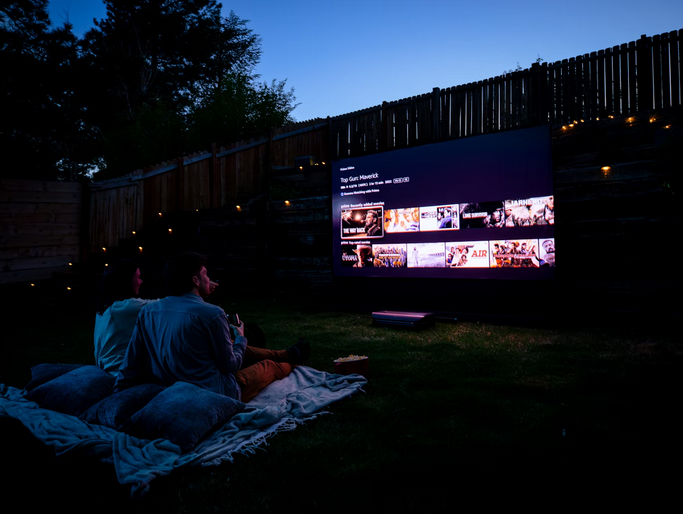Setting up a home entertainment system is an exciting project that can transform your living space into a hub of immersive entertainment. Whether you’re a movie buff, a gaming enthusiast, or a music lover, a well-designed entertainment system with the best home cinema speakers can elevate your experience to a whole new level. However, setting up your system can be overwhelming with so many components and options available. To help you create the perfect setup, below are some essential pointers to consider when setting up your entertainment system at home.
Plan Your Space and Layout
Before purchasing any equipment, planning your space and layout is important. Consider the size and shape of the room where you’ll be setting up your entertainment system. Your TV, speakers, and seating placement will significantly affect your viewing and listening experience. Ideally, the TV should be at eye level when seated, and the main speakers should be at ear level, angled toward the listening area. If setting up a surround sound system, place the rear speakers behind or to the sides of your seating space for an immersive audio experience. Take measurements and plan your layout to ensure everything fits comfortably and functions optimally.
Choose the Right Display

The display is the centerpiece of your entertainment system, so choosing the right one is crucial. When selecting a TV, consider factors such as screen size, resolution, and display technology. A screen size between 55 and 75 inches is ideal for most living rooms, but this depends on your room space and viewing distance. Opt for a 4K UHD TV for crisp, clear visuals, especially if you plan on watching high-definition content. OLED and QLED are popular display technologies that offer vibrant colors and deep contrasts. If you’re setting up a home theater, you might also consider a projector and screen for a true cinematic experience. Make sure the display you choose fits well within your space and meets your viewing needs.
Invest in Quality Audio
While the visual aspect of your entertainment system is important, audio quality can make or break your overall experience. Investing in quality speakers is essential for creating a rich, immersive sound. Depending on your space and budget, you can pick from soundbars, bookshelf speakers, floor-standing speakers, or a full surround sound system. A soundbar is a compact, space-saving option that can significantly improve your TV’s sound. In contrast, a full surround sound system offers a more immersive experience with multiple speakers around the room. Don’t forget to include a subwoofer for deep bass, which enhances the impact of movies and music. Ensure that your speakers are positioned correctly to optimize sound quality.
Consider Smart Features and Integration

Modern entertainment systems often include smart features that enhance convenience and connectivity. When setting up your system, consider integrating smart devices like voice assistants, smart TVs, and streaming services. Many TVs and speakers now come with built-in support for Amazon Alexa, Google Assistant, or Apple HomeKit, allowing you to control your system with voice commands. Integrating smart features can simplify your entertainment experience and make your system more user-friendly.
Test and Calibrate Your System
Once your entertainment system is set up, it’s important to test and calibrate it for optimal performance. Start by running a sound test to ensure all speakers work correctly and the audio levels are balanced. Many modern AV receivers offer automatic calibration features that adjust the sound based on your room’s acoustics. You should also adjust your TV’s picture settings to match your room’s lighting conditions, ensuring you get the best possible image quality. Finishing your system will enhance your overall entertainment experience, providing clear visuals and immersive sound.
Setting up a home entertainment system is rewarding and can greatly enhance your enjoyment of movies, music, and games. By carefully planning your space, choosing the right display and audio components, managing cables effectively, integrating smart features, and calibrating your system, …

 This classic game first appeared in the early 1990s and has since been included in most versions of Windows operating systems. It’s a game of strategy and logic in which the player attempts to locate hidden mines on an 8×8 grid by clicking around the board and deducing which squares are safe. It’s a great way to improve your analytical thinking skills and exercise your short-term memory. The game also helps you develop pattern recognition, which is an important part of problem-solving and IQ enhancement.
This classic game first appeared in the early 1990s and has since been included in most versions of Windows operating systems. It’s a game of strategy and logic in which the player attempts to locate hidden mines on an 8×8 grid by clicking around the board and deducing which squares are safe. It’s a great way to improve your analytical thinking skills and exercise your short-term memory. The game also helps you develop pattern recognition, which is an important part of problem-solving and IQ enhancement.
 matters a lot. One that can let a sizeable number of people take a photo at the same time is the best. Group photos are more fun and entertaining during such events. A small photo booth will only limit the number of people who can take these photos at a go. Look for a size that can accommodate many for great photography experience.
matters a lot. One that can let a sizeable number of people take a photo at the same time is the best. Group photos are more fun and entertaining during such events. A small photo booth will only limit the number of people who can take these photos at a go. Look for a size that can accommodate many for great photography experience.